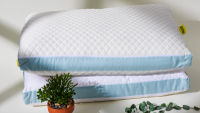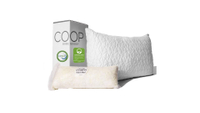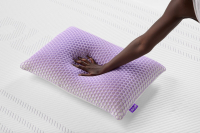How to choose the perfect pillow – for your sleep position, mattress and budget
From sleeping positions to thickness, our expert reveals the factors that affect your pillow choice – for optimum sleep quality

Have you noticed you're waking up with a sore neck or not getting the quality sleep you crave? It could be time to replace your pillow. But, as there are so many options on the market, it's important to learn how to choose the perfect pillow for optimum comfort.
Yes, there is a science behind it, and there are many factors to consider when choosing the best pillow, including its material, firmness and size. You also need to consider which sleep position you favor, as well as how soft or firm your mattress is.
'Take some time to choose your pillow, just as you would spend time choosing the right mattress to improve the quality of your sleep,' says Natalie Dautovich, National Sleep Foundation's Environmental Scholar, and Associate Professor of Psychology at Virginia Commonwealth University. 'If you spend 10 minutes testing pillow options before you buy, it will be a great investment for your family's sleep in the long run.'
Choosing a pillow by material

Certain materials will be better suited to your needs. For example, if you're a hot sleeper, you may want to avoid memory foam. Or, if you're allergic to dust mites, you should steer clear of feather or down.
'You can spend a lot or a little on pillows, but consider your personal preference, and idea of comfort and support rather than price,' says Natalie. 'It's best to find a pillow that supports your head and neck and keeps everything in alignment, that won't go flat during the night or make you hot.'
We take a look at the different pillow fills available below, so you can decide what's the best match for you and your sleep quality:
- Feather: A great option if you like your pillows super-soft. Feather fill is supportive and molds to your shape, but does need replumping to avoid flatness. Feather pillows are often not machine washable, but shouldn't break the bank if you wish to replace them. 'Down or feather blends feel fluffy and soft, but do take some maintenance and are not hypoallergenic,' says Natalie. You may also experience the odd feather quill poking out of the pillowcase.
- Down: Even softer and fluffier than feather fill, down is a sought-after pillow material that comes from the softer inner chest or back feather of a duck or goose, which keeps them warm, as opposed to the outer feather coating. It's lightweight yet supportive, and more affordable than memory foam. However, it can become compressed throughout the night, leaving it a little flat, which can contribute to neck pain in some instances. Down traps heat and keeps you warm while still remaining quite breathable – a plus for some, but probably not one for really warm sleepers. Down is also very durable and can last for year with the proper care. As with feather, it requires constant fluffing, and is not ideal if you're sensitive to dust mites. Ethical issues of feather and down are also a consideration.
- Down alternative: If you're a hot sleeper who loves the softness of down but finds it too warm, a down alternative could be for you. It's also a great option for vegans or anyone who would prefer not use an animal product. Down alternative is made up of puffs of polyester that mimic the softness of down. They're hypo-allergernic, whereas down pillows are not, so are perfect for anyone sensitive to allergens. Down alternative pillows maintain their shape more than real down, and are usually machine washable, as well as being more affordable.
- Memory foam: Initially feeling quite firm, memory foam will soften around your contours as it softens with body heat and pressure. Because of this, it's usually suitable for most sleeping positions. Memory foam pillows have a lot of benefits, including great support (they don't compress as much as down during the night) durability, and smoothness (it won't get lumpy with age like down can). However, it's not particularly breathable, so not ideal for hot sleepers or warm climates, can feel quite heavy, has an initial odd smell (polyurethane) and can be pricey. 'Memory foam feels dense and more sponge-like but supports your head,' notes Natalie.
- Synthetic fill: Made with synthetic fibers, these pillows contain small molecules made with chemicals, so are not likely to be the first choice for anyone that prefers natural fibers. However, they are lightweight, good for any sleeping positions, suitable for people with respiratory allergies, affordable, and easy to care for. Synthetic pillows won't contour your body like a memory foam pillow, and may not last as long as other pillow types. Natalie says: 'Synthetic pillows have some resistance, but are still soft. They also tend to be cost-friendly.'
- Latex: A sustainable choice, latex pillows are crafted with latex rubber from rubber trees. They are firm but mold to your head and neck, are hypoallergenic and resistant to dust mites, and free of chemicals. One drawback is that they can be quite expensive. They're also likely not for you if you like a soft feel akin down or down alternative. Always check that you are not allergic to latex before purchase.
- Wool: Cold sleeper? Wool's natural insulation will keep you warm at night. Breathable and natural, its hypoallergenic so ideal for anyone with allergies, and is also moisture-wicking so should prevent hot sweats. It won't offer as much support as some other options, and go flat over time, needing a lot of fluffing.
- Cotton: A good option for anyone with allergies to synthetics, cotton is natural and comfortable. It keeps your warm in winter and cool in summer. However, it can flatten or get lumpy over time, needs cleaning often otherwise will be susceptible to dust mites, and doesn't contour your head and neck like a memory foam option would.
- Gel: A gel pillow sees a cooling gel layer, pods or infusions inserted into the pillow material. This is done to regulate temperature and reduce heat buildup. They claim to be good for hot sleepers but can often be a little firm for some.
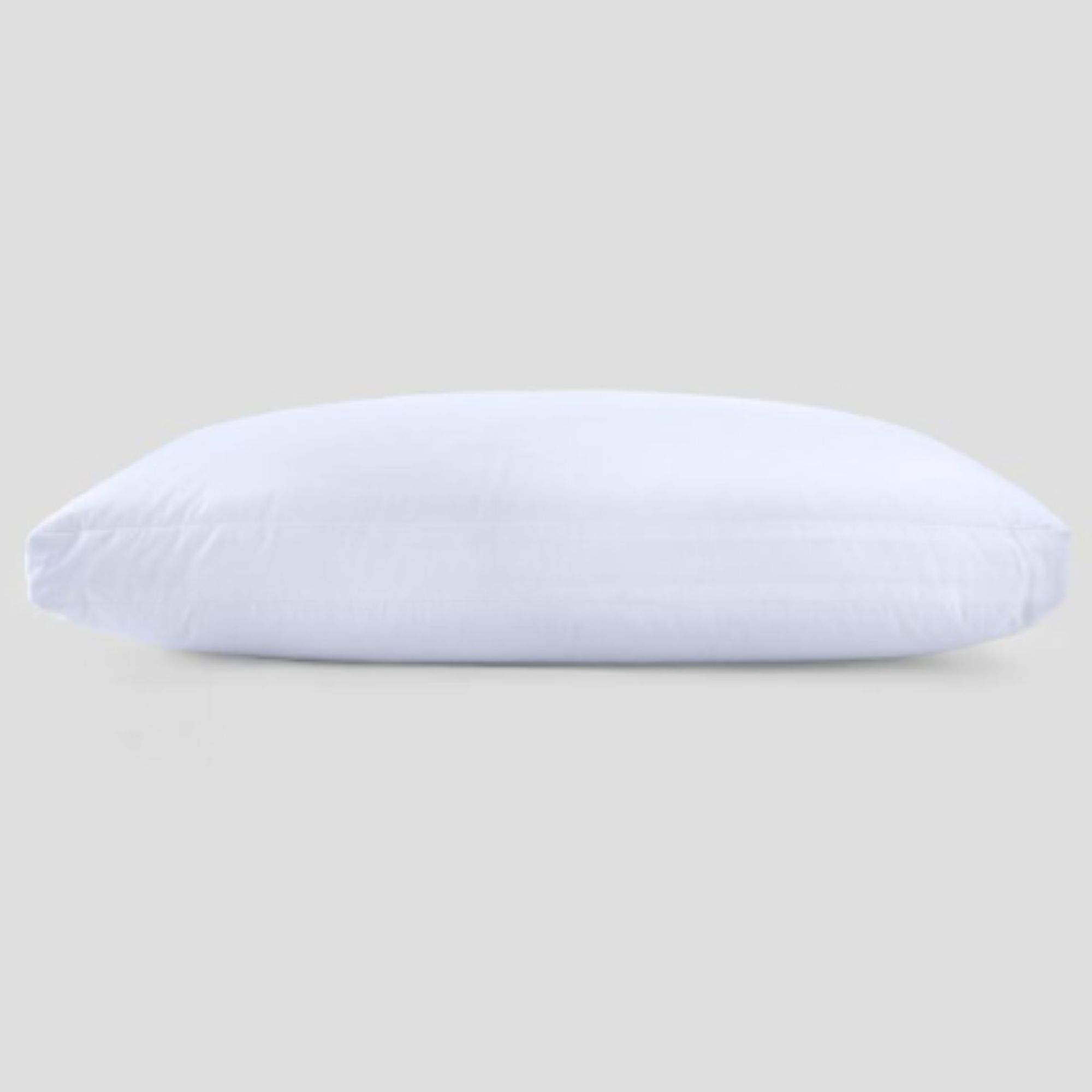
The best pillow on the market is the Casper Original. Our tests found that this down-alternative suits every sleep style.
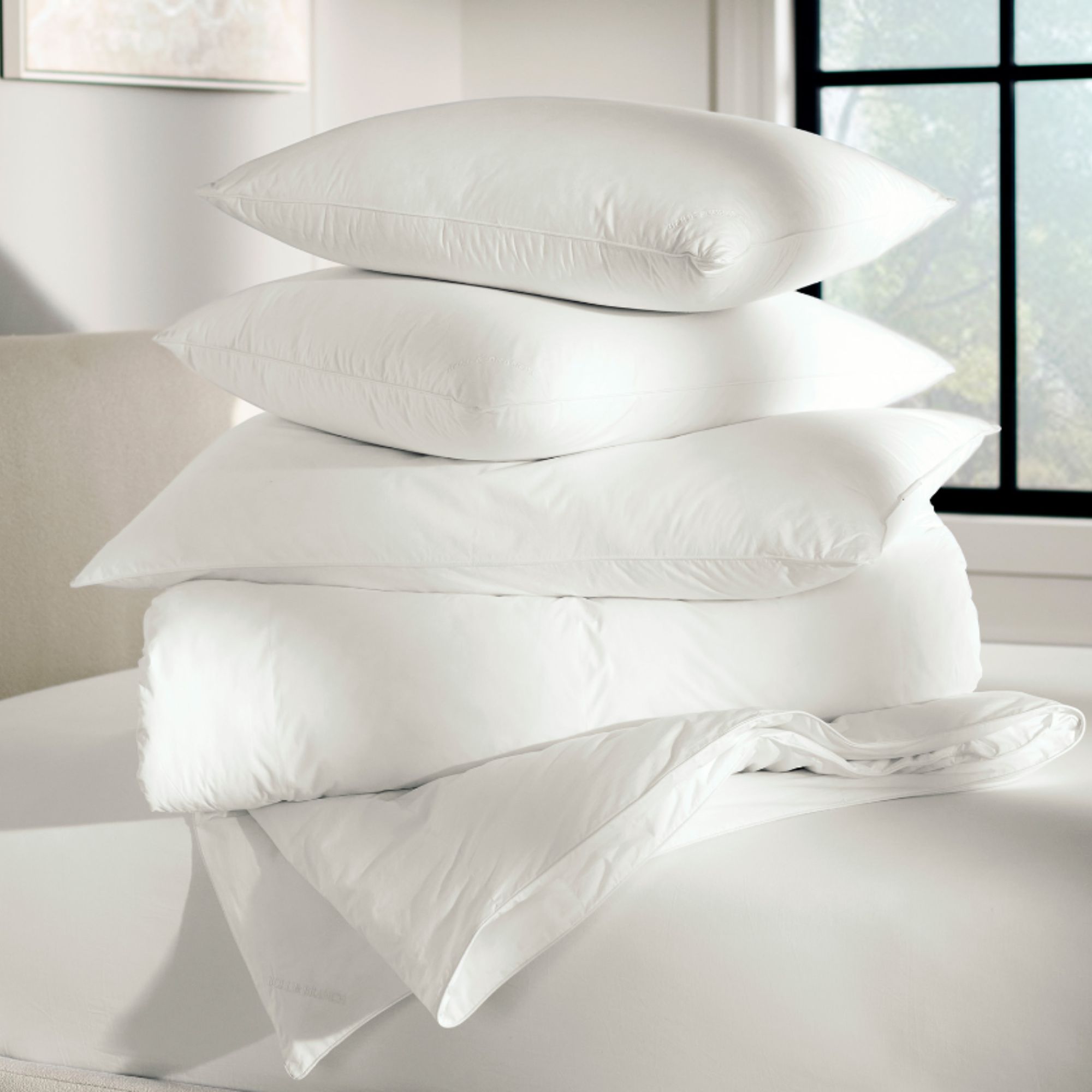
If you're after a down pillow, our favorite is the Boll & Branch Down Pillow. Soft and supportive, the down is from responsibly-sourced farms.
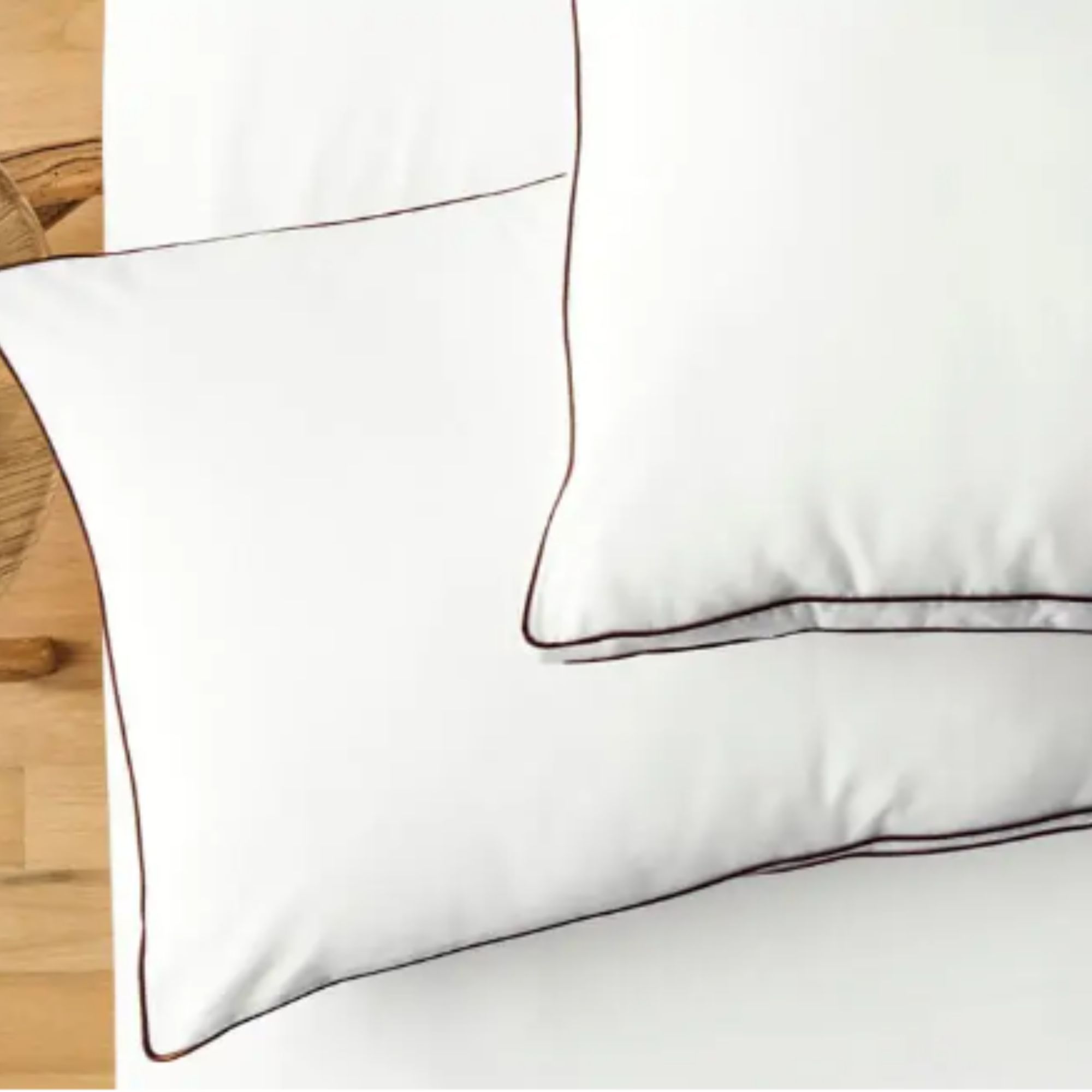
It doesn't get more luxurious than the Saatva Latex pillow. A down alternative surrounds a supportive latex core, resulting in a hotel-quality pillow.
Choosing a pillow to suit your sleep position

'The best pillow will support your head and neck in a neutral position, not craned or kept at an angle from your spine – sitting too far back, forward, or to the side,' explains Natalie. 'That's why your sleeping position is a factor to consider in choosing the best pillow.
'Side sleepers, back sleepers, and stomach sleepers tend to sleep best with different pillow types, so think about the position in which you spend the majority of your sleep time.'
- Side sleepers: 'Side sleepers often use a thicker pillow,' says Natalie. 'If you sleep on your side most of the night, you want a pillow that supports your head enough to keep it in alignment so it's not tipping down towards the mattress.' Pillow types that are good for side sleepers include: synthetic fill, down, down alternative, cotton, memory foam.
- Stomach sleepers: 'Stomach sleepers often use a flat pillow,' states Natalie. 'Stomach sleepers tend to like a very thin pillow, which can be used under the head, chest, or stomach.' Pillow types that are good for stomach sleepers include: down, down alternative, wool, cotton, gel, memory foam.
- Back sleepers: 'Back sleepers often use a pillow with medium support,' says Natalie. 'If you're a back sleeper, you might feel most comfortable with a pillow of medium thickness - one that is supportive, but doesn't crane your neck forward.' Pillow types that are good for back sleepers include: down, down alternative, feather, cotton, latex, gel, memory foam.
Pluto Pillow | $110 at Pluto Pillow
If you aren't sure which pillow best suits your sleep style, the Pluto Pillow is a smart option. You fill out a sleep questionanaire and Pluto make your pillows to order, tailored just for you.
Choosing a pillow to suit your mattress

You might be surprised that the type of mattress you have can inform the type of pillow you should buy.
The general rule is that lower pillows work better with softer mattresses, and loftier pillows are better on harder mattresses – in all cases, it's about achieving good alignment.
Made your choice? These are the best places to buy pillows.
Coop Home Goods Premium Adjustable Loft Pillow | $72 at Coop Home Goods
This adjustable pillow is a good idea if you're not sure which height of pillow suits you. One of our picks for the best pillows, it opens right up so you can add or remove as much fill as you need.
What pillow is best if you sleep hot?

The best pillows for hot sleepers are ones that don't trap heat and regulate your temperature. Choose latex, gel, down alternative, or cotton if you're a hot sleeper.
Purple Harmony Pillow | $179 at Purple
Our expert tests found that the Purple Harmony is the coolest pillow you can buy. This latex and gel hybrid offers unbelievable breathability and temperature control, and it stays plump and fluffy all night. You'll never flip your pillow to the cool side again.
What pillow is best for a cool sleeper?

A cool sleeper should choose a pillow material that will keep them cozy and warm, like down, memory foam, and wool.
Which pillow is best if you're allergic to dust mites?

If you're allergic to dust mites, you should choose a hypoallergenic pillow material like down alternative, cotton, memory foam, wool or synthetic fill.
Brooklinen Down Alternative Pillow | $65 at Brooklinen
This polyfill pillow is our favorite down alternative. Hypoallergenic and vegan, there's no feathers involved, so it's an excellent choice if you suffer from allergies.
What size pillow should I choose?

Your bed size will usually dictate the size of your pillow. Pillows usually come in standard, king and queen sizes. So, if you have a king-sized bed, choose two king pillows.
What are the qualities of a good pillow?
A good pillow will be comfortable, breathable, easy to clean, supportive, the right thickness, hypoallergenic, and durable.
Why is my pillow giving me neck ache?
If you find yourself regularly suffering with a sore neck, your pillow could be the culprit.
Side sleepers can get away with a thicker pillow but, if you're a front or back sleeper and you have a thick pillow, it could be causing your neck to strain too far forward or back.
Equally, a pillow that is too flat could strain the neck muscles as they stabilize themselves.
'The best pillow will support your head and neck in a neutral position, not craned or kept at an angle from your spine-sitting too far back, forward, or to the side,' says Natalie.
What are the signs that you need to replace your pillow?
If your pillows are stained or discolored, even after washing, it's probably time for an upgrade.
But, aside from appearance, you may also need to replace your pillow if you're suffering from neck ache, or if you're finding that you wake up frequently as your pillow is too flat.
Pillows are also a hotspot for bacteria and dust mites so, if you're regularly waking up sneezing, you may need to switch to a hypoallergenic option.
Natalie Dautovich says: 'Give your pillows a once-over for lumps and sags to see if it's time to replace them.'
How often should you replace your pillows?
'Many doctors recommend replacing pillows every two years,' says Natalie. 'Most pillows are washable, or can be run through the dryer on high temperature to kill dust mites.'
Purple Harmony Pillow | $179 at Purple
Our expert tests found that the Purple Harmony is the coolest pillow you can buy. This latex and gel hybrid offers unbelievable breathability and temperature control, and it stays plump and fluffy all night. You'll never flip your pillow to the cool side again.

If you're after a down pillow, our favorite is the Boll and Branch Down Pillow. Soft and supportive, the down is from responsibly-sourced farms.
Sign up to the Homes & Gardens newsletter
Design expertise in your inbox – from inspiring decorating ideas and beautiful celebrity homes to practical gardening advice and shopping round-ups.
Ruth Doherty is an experienced digital writer and editor specializing in interiors, travel and lifestyle. With 20 years of writing for national sites under her belt, she’s worked for the likes of Livingetc.com, Standard, Ideal Home, Stylist and Marie Claire as well as Homes & Gardens.
-
 5 things people with clean upholstery always do – simple, quick and oh-so-effective
5 things people with clean upholstery always do – simple, quick and oh-so-effectiveEnsure your furnishing looks clean year-round with these expert tips
By Seraphina Di Mizzurati Published
-
 7 native perennials to plant in April – for glorious flowering displays to attract bees, butterflies, and hummingbirds
7 native perennials to plant in April – for glorious flowering displays to attract bees, butterflies, and hummingbirdsDiscover some of the best perennials to plant in April to make your garden a hotspot for wildlife
By Drew Swainston Published
